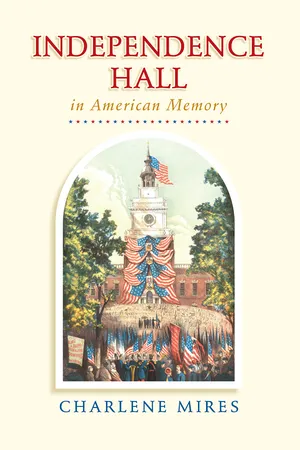History
Christiana Riot
The Christiana Riot was a violent clash between African American residents and slave catchers in Christiana, Pennsylvania in 1851. The incident was sparked by the arrival of slave catchers seeking to capture four fugitive slaves. The riot resulted in the death of one of the slave catchers and the trial and acquittal of 38 African Americans charged with treason.
Written by Perlego with AI-assistance
Related key terms
1 Key excerpts on "Christiana Riot"
- eBook - ePub
- Charlene Mires(Author)
- 2015(Publication Date)
- University of Pennsylvania Press(Publisher)
As dramatic and unnerving as the first fugitive slave cases were, they were preludes to the celebrated treason trial that followed the so-called “Riot of Christiana,” in which a Maryland slaveowner with the legally required warrants was killed while in pursuit of suspected fugitives in Lancaster County, Pennsylvania. In the aftermath of the confrontation on September 11, 1851, thirty-three blacks and five whites were charged with treason for interfering with the Fugitive Slave Law. Those who did not manage to escape arrest were taken to Philadelphia for trial. Charged with a federal offense, the defendants faced judge and jury in the second floor of the State House. The setting provided lawyers with the opportunity to link their arguments to the memory of the signers of the Declaration of Independence and the framers of the Constitution.Amid the sectional tension of the 1850s, the Christiana shootout drew national attention and unleashed public debate that resonated with the historic associations of the old Pennsylvania State House. Were the Christiana men defenders of liberty in the tradition of the Declaration of Independence? Or were they the worst sort of criminals, defying the authority of the Constitution by refusing to comply with the law? At the Pennsylvania Anti-Slavery Society’s annual meeting in West Chester, a speaker declared, “Those colored men were only following the example of Washington and the American heroes of ’76.”42 In Philadelphia, on the other hand, a mass meeting in Independence Square supported swift punishment of the Christiana defendants “to prevent the recurrence of so terrible a scene upon the soil of Pennsylvania, to ferret out and punish the murderers thus guilty of the double crime of assaulting the Constitution, and of taking the lives of men in pursuit of their recognized and rightful property.”43With one defendant, a white man named Castner Hanway, brought to trial first as a test case, panels of prominent attorneys assembled for the prosecution and defense. The team of five defense lawyers included Thaddeus Stevens, an antislavery activist and congressman from Pennsylvania. The seven prosecution lawyers included U.S. Senator James Cooper of Pennsylvania, the U.S. attorney of the Eastern District of Pennsylvania, and the attorney general of Maryland. On November 24, the first day of the trial, the National Era noted that “an immense crowd of blacks and whites blocked up the passage-way through Independence Hall, leading to the Court-room. At half past ten o’clock the doors were opened and the crowd rushed in, filling the room to suffocation.” In the course of the three-week trial, spectators included such prominent abolitionists as Lucretia Mott. At one session, twenty-four of Hanway’s alleged accomplices were brought to court so that one of them could be identified by a witness. To the disgust of the chief prosecutor, they wore red, white, and blue scarves around their necks, and black defendants sat with white female supporters.44
Learn about this page
Index pages curate the most relevant extracts from our library of academic textbooks. They’ve been created using an in-house natural language model (NLM), each adding context and meaning to key research topics.
